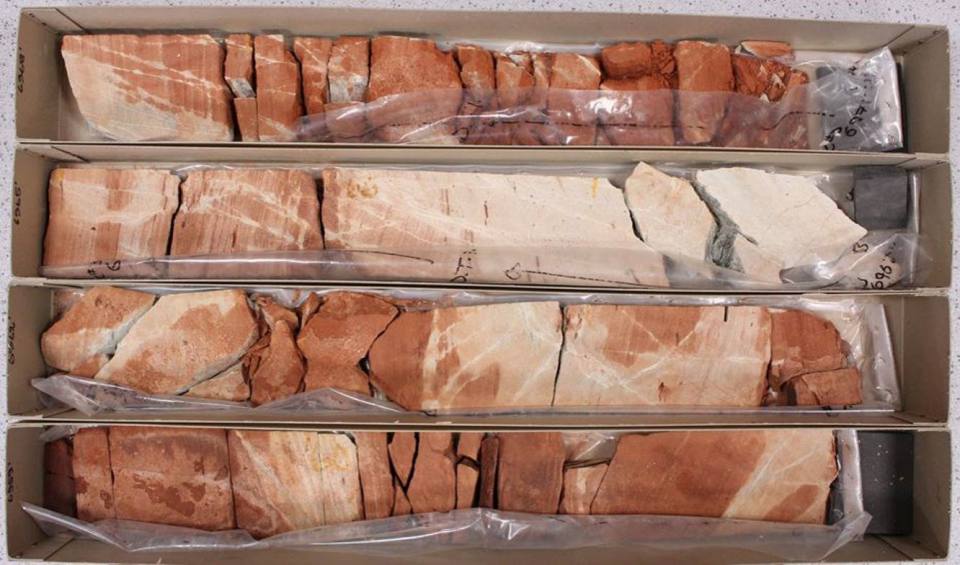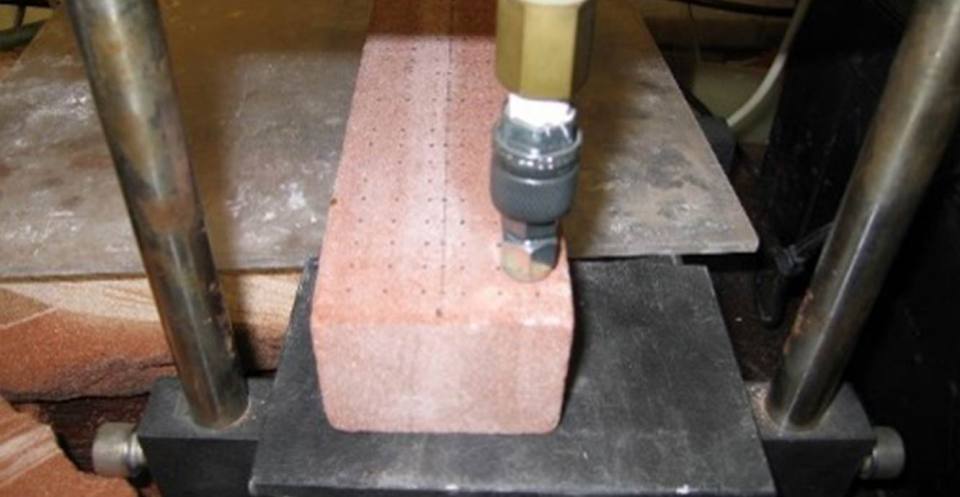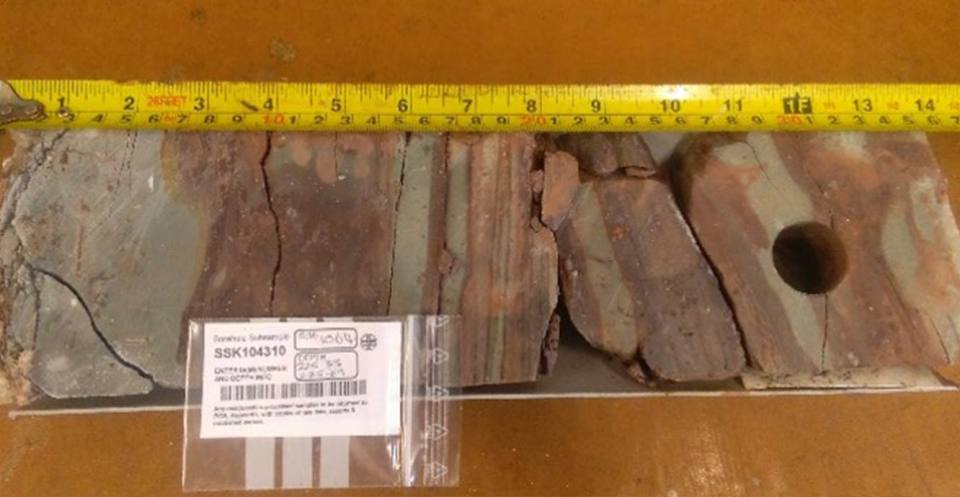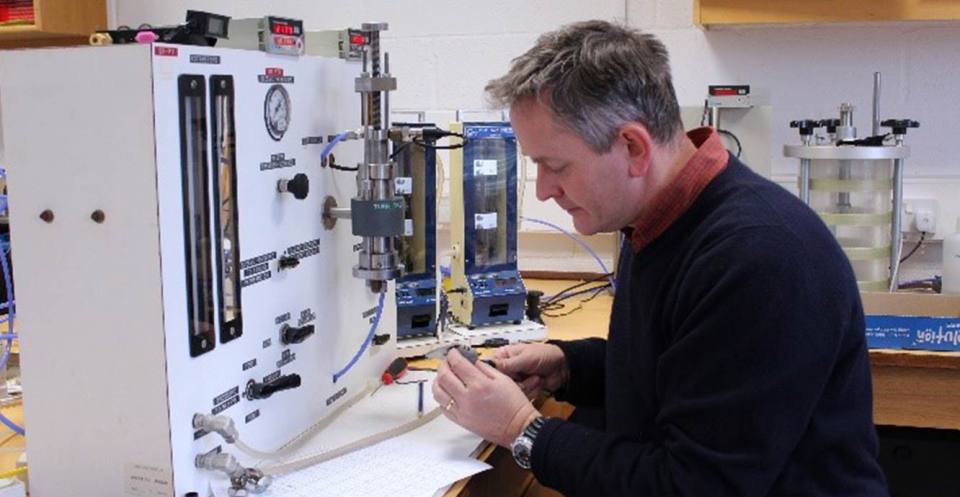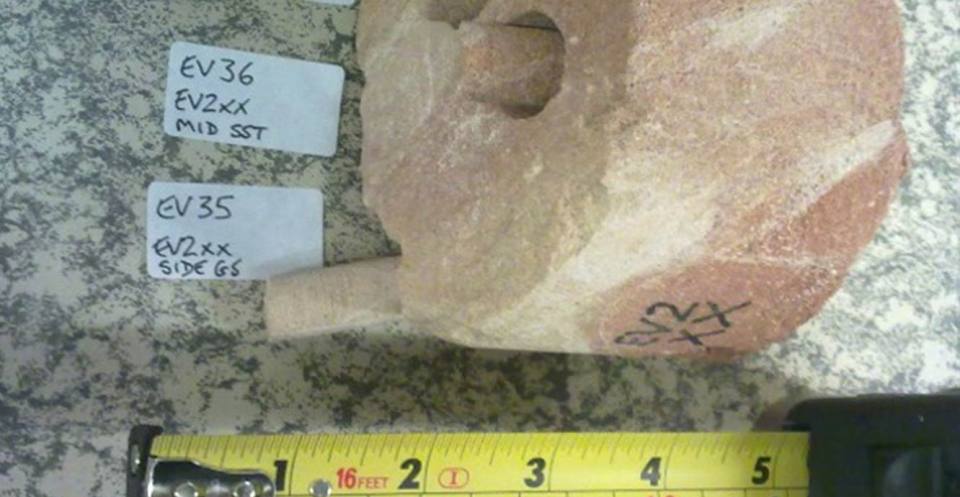BGS staff in the Environmental change, adaptation and resilience (ECAR) science challenge area undertake routine and specialised core characterisation on drillcore and rock chippings from borehole and outcrop samples for a wide range of hydrogeological purposes.
The facility is based at the BGS Wallingford site but forms part of the environmental geochemistry suite of laboratories. It collaborates with other challenge areas to address increased demand for monitoring the impacts of activities in the subsurface and operates throughout the UK and, in some cases, internationally.
We are able to offer the following sample analyses:
- core handling
- sample preparation/subsampling: cutting/encapsulation
- moisture content
- porosity with density (liquid re-saturation)
- porosity (helium) using caliper bulk volume
- permeability (nitrogen gas)
- probe/mini permeability (point)
- specific yield/drainable porosity (centrifuge): consolidated
- specific yield/drainable porosity (centrifuge): unconsolidated
- pore-fluid extraction (including volatiles)
- liquid permeability (falling head): unconsolidated
- liquid permeability (pumped via coreholder)
- permeability at elevated pressures (per point to 5000 psi)
- porosity (helium injection) at elevated pressures (per point to 5000 psi)
- mercury injection pore size distribution and porosity
- particle size distribution (Mastersizer)
- particle size distribution (wet, dry and motorised shaker)
- individual or batch labelled sample photography
- drainage capillary pressure (porous plate)
- capillary pressure (multi-stage centrifuge)
- electrical testing (Archie, Cementation Exponent)
- full method and QA reporting
Data is available in a variety of formats and can be integrated into standard core or geophysical log outputs such as AGS* or WellCAD** software to provide colour composite plots, including optical or imagery at any scale required. Interpreted statistical outputs can be provided.
* Association of Geotechnical and Geoenvironmental Specialists
** Registered trademark of ALT
Coring and core analysis is a cost-effective way of providing vital subsurface information required by geoscientists in groundwater, environmental, mineral, hydrocarbon and geotechnical investigations.
Hydrogeologists use core analysis data to determine flow and storage in aquifers and to consider their vulnerability to pollution. By attributing models with data, aquifer management is much easier.
In the mineral extractive industry, the objective of coring and core analysis is to characterise rock for an evaluation of reserves. A special case exists for mineral brines where fluid density and viscosity affect extraction.
In the hydrocarbon industry, the objective of coring and core analysis is to reduce uncertainty in reservoir evaluation by providing data representative of the reservoir and to provide information on how fluids will respond to pumping and pressure changes in the reservoir during extraction. The higher pressures and temperatures associated with these reservoirs (and to some extent deep geothermal investigations) and the mixture of fluids present make these studies much more complicated.
Used alone or in conjunction with other data, e.g. pore fluid geochemistry, field-scale hydraulic properties, pump test data and borehole logging, sample testing provides a powerful tool for investigating hydrogeology and reservoir properties, resolving problems in both the saturated and unsaturated zones.
We have extensive experience of testing operations in the UK and overseas for a wide range of clients including Government agencies, water industry and private sector consultancies.
Our testing service typically ranges from basic sample testing for a single borehole to comprehensive analyses and interpretation of borehole cores for a site or region, incorporating other hydrogeological data collated specifically or already available. Processing and interpretation of clients’ own data and its integration with other hydrogeological information is also undertaken. Tests conducted or reviewed are databased with strict client confidentiality.
We hold records and data from over half-a-million boreholes distributed throughout the UK and this information can be used to geologically classify and make regional interpretations of new data. The laboratory sample reference collection and datasets formed a basis for the Major and Minor Aquifer Properties Manuals and associated databases.
Aquifer properties manuals
Allen, D J, Brewerton, L J, Coleby, L M, Gibbs, B R, Lewis, M A, MacDonald, A M, Wagstaff, S J, and Williams, A T. 1997. The physical properties of major aquifers in England and Wales. British Geological Survey Technical Report WD/97/034; Environment Agency R&D Publication 8. (Unpublished.)
Jones, H K, Morris, B L, Cheney, C S, Brewerton, L J, Merrin, P D, Lewis, M A, MacDonald, A M, Coleby, L M, Talbot, J C, Mckenzie, A A, Bird, M,J, Cunningham, J E, and Robinson, V. 2000. The physical properties of minor aquifers in England and Wales. British Geological Survey Technical Report WD/00/004; Environment Agency R&D Publication 68. (Unpublished.)
- BGS UK Geoenergies Observatories’ Glasgow Observatory and boreholes peripheral to the Cheshire Geoenergy Observatory
- Nottingham Geoenergy Test Bed
- DTC Penrith Sandstone study
- Buckinghamshire Chalk study
- Thames Water Plc
- SRK
- Environment Agency
- Armenia Mining Co.
Relative topics
You may also be interested in
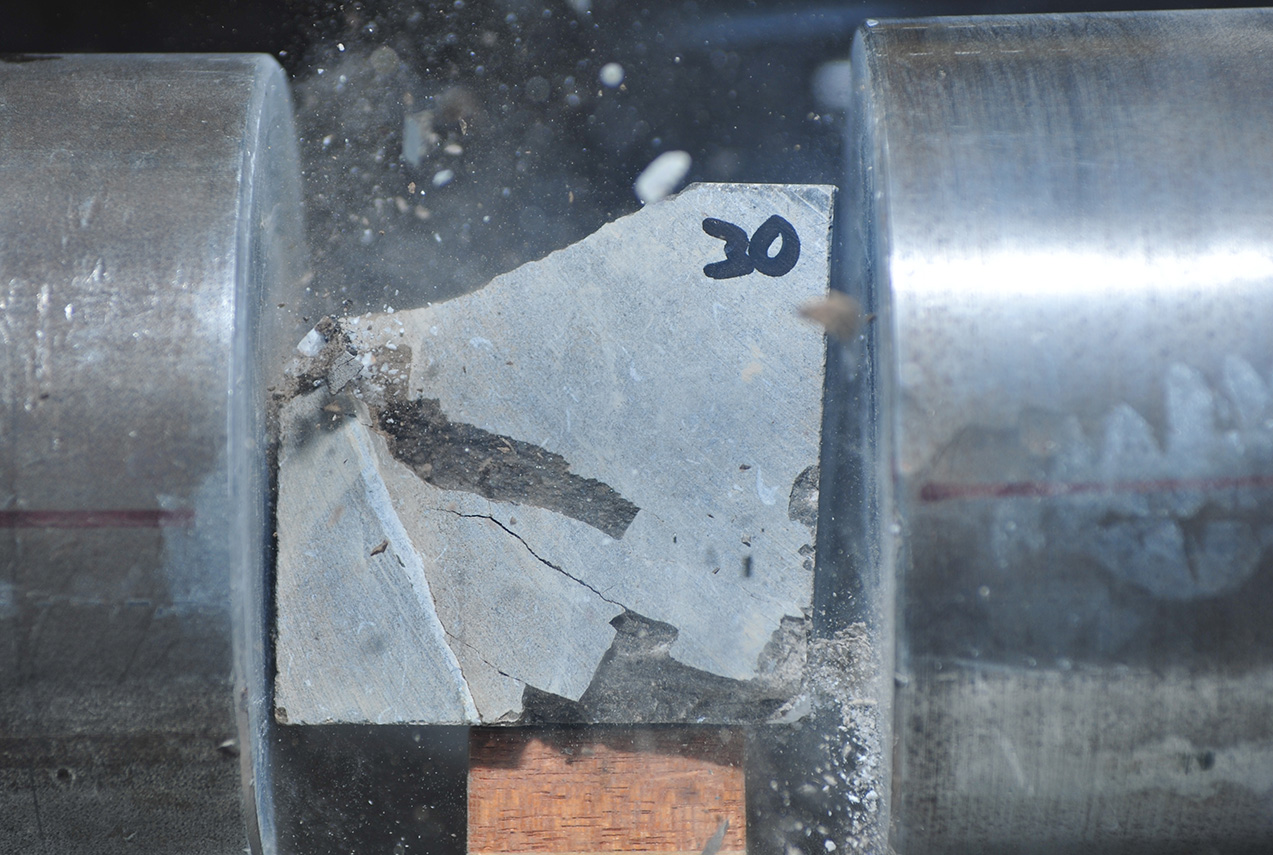
Science facilities
BGS operates and maintains a wide range of state-of-the-art laboratories and other facilities, which underpin virtually all of our research.
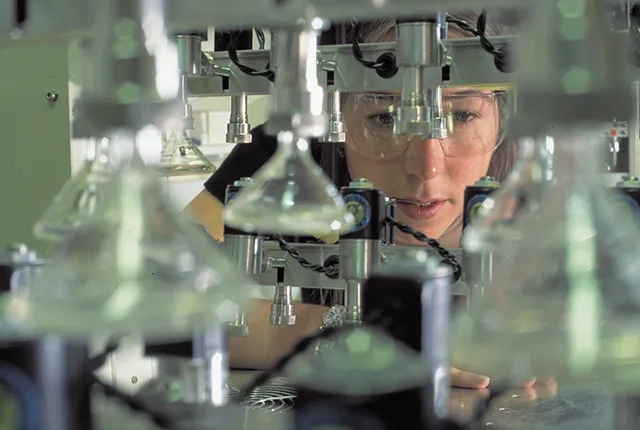
Centre for Environmental Geochemistry
Focusing on the use of geochemistry in research, training and teaching.


